Industry News, trenchless people
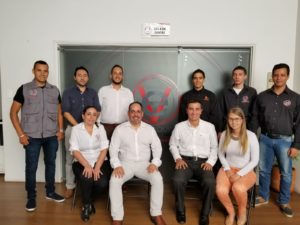 Ve Group now sells and services Vermeer underground construction equipment
Ve Group now sells and services Vermeer underground construction equipment
PELLA, Iowa, August 29, 2017 – Vermeer Corporation expands its South America dealer network with the addition of Medellín, Colombia, based Ve Group. With the addition of Vermeer underground construction equipment, Ve Group will be able to provide its Colombian customers with high-quality construction equipment, as well as aftermarket parts and service support.
“Ve Group is committed to its customers,” said Tony Briggs, vice president – sales & distribution at Vermeer. “Dealer Principal Santiago Durango has an established track record and in-market experience in the pipeline installation, maintenance and rehabilitation markets. He puts his customers’ needs first. We are confident he and everyone at Ve Group will do an excellent job of representing Vermeer.”
Over the last 10 years, Ve Group has been instrumental in establishing trenchless technology best practices in South America and has formally trained more than 1,300 people at universities and on jobsites. The team at Ve Group has provided support and onsite expertise on many of the largest underground projects in Colombia and surrounding countries. Santiago is also a founding member of ICTIS, the Colombian International Society for Trenchless Technology chapter.
“Our partnership with Vermeer will be good for contractors in Colombia,” Durango said. “We’ve always been committed to providing our customers with the best solutions at the best value, and the Vermeer utility installation products exceed our high standards. I’ve had the opportunity to work with the team at Vermeer in various roles throughout my career, and I know they will do a great job of working with customers and us. We’re excited to be representing the Vermeer brand.”
To learn more about Ve Group products and services, visit vedelivers.com.
To learn more about Vermeer Corporation, products, the dealer network and financing options, visit vermeer.com.
trenchless people
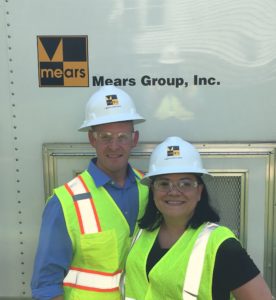 Molly & Matt Go to Mears!
Molly & Matt Go to Mears!
After meeting at NASTT’s South Central Regional Chapter event in Arlington, Texas, Sewer Division Director at Mears Group, Inc, Matt Wilkin, invited NASTT Membership Manager, Molly Gallagher, on her very first jobsite visit! Fortunately Matt was going to be in Cleveland, Ohio in early August and they set a date to meet up. Preparations began as Molly had to purchase her first pair of steel toed boots! “Safety First” is the message that Matt continuously drove home, as the mission statement at Mears is to safely deliver innovative, efficient and high quality construction solutions to the energy distribution industry by:
- Providing best value services to our customers
- Developing and retaining the best people in the industry
- Committing to the highest safety and quality standards
- Investing in the best equipment and technology available
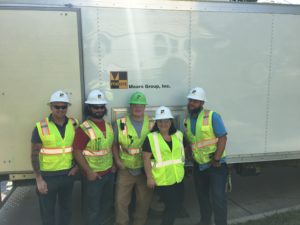 Mears has more than $50 million invested personal safety equipment and training in past two years, including AED equipment on their trucks and other locations totaling 5,000 AEDs purchased with training provided to all employees.
Mears has more than $50 million invested personal safety equipment and training in past two years, including AED equipment on their trucks and other locations totaling 5,000 AEDs purchased with training provided to all employees.
Molly met several crew members on two job sites and was invited back anytime.
Molly added, “I want to offer a sincere thank you to Matt Wilkin and Mears for allowing me to see the inter-working of your crews, staff and facility. It was an experience I won’t ever forget. I should have asked to keep the hardhat and stylish vest!”
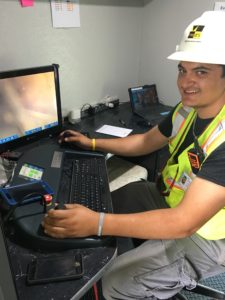
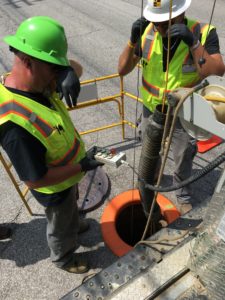 Click here for more information on NASTT Corporate Member, Mears Group, Inc.
Click here for more information on NASTT Corporate Member, Mears Group, Inc.
trenchless people
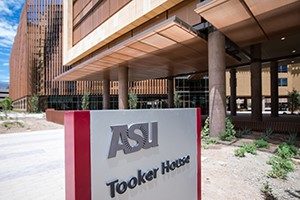 Tempe, Ariz. – Engineering undergraduates moving into a new Arizona State University residence hall this week will find themselves immersed in a collaborative, technology-laden living and learning community built specifically for engineers.
Tempe, Ariz. – Engineering undergraduates moving into a new Arizona State University residence hall this week will find themselves immersed in a collaborative, technology-laden living and learning community built specifically for engineers.
The Fulton Schools Residential Community at Tooker House is a 1,600-person, co-ed residential community for undergraduate students in ASU’s Ira A. Fulton Schools of Engineering. The “dorm built for engineers” features on-site digital classrooms, state-of-the-art makerspaces complete with 3D printers, laser cutters, and design tools needed for a broad range of engineering courses and projects.
“Innovation has a new home address at Tooker House,” says Kyle Squires, dean of the Fulton Schools of Engineering. “This mixed-use living and learning facility sets a new standard in engineering education and reflects the breadth and depth of the student experience at the largest engineering school in the nation.”
Situated in a prominent location on the ground floor of the building, the maker lab allows students to work on class projects and explore ideas steps away from their living suites – essentially in their living room. The lab features sliding glass walls that encourage activities to spill outdoors, where exhibition pedestals enable students to present their work and invite discussion and feedback.
The seven-story, co-ed community was built by American Campus Communities on ASU’s Tempe Campus. The residence hall features a 525-seat dining facility, Bluetooth-enabled laundry rooms that notify you when your clothes are dry, advanced green building technology and enough high speed internet bandwidth to accommodate multiple devices per resident.
Elton Forlemu, an ASU civil engineering sophomore serving as a community advisor in Tooker House this fall, says “the work and study spaces are inspiring.”
Last year Forlemu lived off campus and spent hours studying and working in engineering classroom buildings, then traveling about 20 miles home to Glendale. He now envisions himself having late-night discussions in Tooker study spaces and then heading to the makerspace or computer lab to collaborate on a project “before it leaves your head.”
Archtectural firm Solomon Cordwell Buenz’s design approach to Tooker House began with traditional desert architecture concepts as a starting point for creating a sustainable building that both feels appropriate to its context and can endure harsh desert conditions. The community features a complementary color palette of desert tones, using colors and materials that will resist fading and degradation under extreme UV exposure conditions.
The building’s most striking feature, hundreds of vertical perforated louvers on the south façade, each positioned according to a sophisticated algorithm, ensures daytime sunlight control unique to each window’s location. Highly efficient glazing with significant shading capacity allow transparency and daylight without detriment to thermal performance and comfort. Metal window canopies and vertical metal louvers additionally shade windows from direct sunlight while preserving views.
“Last year, I watched the building process from skeleton to finished project,” says Forlemu, who aspires to build hospitals and large business complexes. “As an engineer, it was fascinating. What gets me is the infrastructure – there is such great use of space here.”
Tooker House also will play a prominent role as ASU expands its smart campus capabilities, incorporating sensing and energy efficiency analytics and other Inernet of Things (IoT) technologies not only into the building’s operation, but also into the engineering program’s curriculum.
The new residence hall is named for Diane and Gary Tooker. Diane Tooker is an alumnus of ASU’s Mary Lou Fulton Teachers College (BAE ’61) and a business owner and former elementary school teacher. Gary Tooker is an alumnus of the Fulton Schools of Engineering (BSE ’62) and a former CEO of Motorola. Together, the couple has made contributions to ASU through the ASU Foundation for more than 30 years, including support for the university’s teaching and engineering programs and the endowed Diane and Gary Tooker Chair for Effective Education in Science, Technology, Engineering and Math. Gary Tooker’s contributions to fostering Arizona’s tech sector were recognized with a lifetime achievement award presented at the 2012 Governor’s Celebration of Innovation.
Tooker House is owned and developed by American Campus Communities under the company’s ACE program, a public-private partnership that provides on-campus housing to universities without using their funds or tax-payer dollars. (www.americancampus.com).
About the Ira A. Fulton Schools of Engineering
The Ira A. Fulton Schools of Engineering, with more than 20,000 enrolled students, is the largest engineering school in the country, offering 39 graduate and 24 undergraduate degree programs.
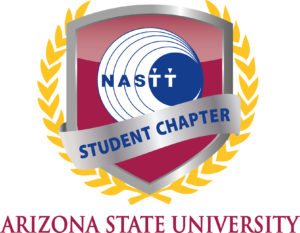
About ASU Enterprise Partners and the ASU Foundation
ASU Enterprise Partners is a private nonprofit organization based in Tempe, AZ and made up of distinct entities, including the ASU Foundation, that raise, create and invest resources for the benefit of Arizona State University while advocating for and advancing ASU’s mission and brand (giveto.asu.edu).
About Arizona State University
Arizona State University has developed a new model for the American Research University, creating an institution that is committed to access, excellence and impact. ASU measures itself by those it includes, not by those it excludes. As the prototype for a New American University, ASU pursues research that contributes to the public good, and ASU assumes major responsibility for the economic, social and cultural vitality of the communities that surround it.
About American Campus Communities
American Campus Communities, Inc. is the largest owner, manager and developer of high-quality student housing communities in the United States. The company is a fully integrated, self-managed and self-administered equity real estate investment trust (REIT) with expertise in the design, finance, development, construction management and operational management of student housing properties. As of June 30, 2017, American Campus Communities owned 160 student housing properties containing approximately 99,000 beds. Including its owned and third-party managed properties, ACC’s total managed portfolio consisted of 197 properties with approximately 128,700 beds. Visit www.americancampus.com.
Industry News
 At this year’s No-Dig Down Under the ASTT will be offering three training courses for members of the infrastructure industry. Produced by the NASTT, and adapted for Australasian audiences, these courses offer the chance for infrastructure professionals to learn from leading experts from around the world and develop their skill-set to an international standard.
At this year’s No-Dig Down Under the ASTT will be offering three training courses for members of the infrastructure industry. Produced by the NASTT, and adapted for Australasian audiences, these courses offer the chance for infrastructure professionals to learn from leading experts from around the world and develop their skill-set to an international standard.
The courses for 2017 will be the Cured-In-Place Pipe (CIPP) Good Practices Course, Horizontal Directional Drilling (HDD) Good Practices Course and Pipe Bursting Good Practices Course.
The CIPP course provides an in-depth overview of wastewater mainline and lateral pipe rehabilitation using CIPP and design to job completion. The course is best suited to council, utility and government employees, asset managers seeking new knowledge of rehabilitation techniques, and young professionals working in the trenchless rehabilitation subsector.
The HDD course provides an in-depth overview of Horizontal Directional Drilling (HDD) and covers six topics: (1) operation and application; (2) equipment and materials; (3) planning, including surface and geological investigations, utility surveys, bore planning, and regulations and permitting; (4) jobsite safety; (5) risk reduction, trouble shooting and mitigation; and (6) design. This course is best suited to council, utility and government employees, civil and geotechnical engineers, beginner drillers, and young professionals working the trenchless installation subsector.
The Pipe Bursting course provides an in-depth overview of pipe bursting and covers four topic areas: (1) the types, methods and applications of pipe bursting; (2) planning and preliminary design of a pipe bursting job; (3) design and construction considerations; and (4) troubleshooting and problem solving.
ASTT’s 12th No-Dig Down Under Conference and Exhibition will be held on the Gold Coast from 12-15 September 2017.
trenchless people
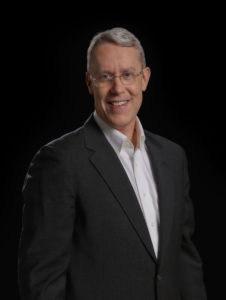
GSSI, the world’s leading manufacturer of ground penetrating radar (GPR) equipment, is pleased to announce the promotion of David Cist to the position of Vice President of Research & Development. An exceptional leader and innovator, since 1996, Dr. Cist has helped GSSI to develop several key products, including an arrayed utility mapper and a series of search and rescue tools.
Promoted from “Chief Geek” in 2015, and more recently to interim Director of R&D, Dr. Cist continues to provide the leadership GSSI needs to drive innovation and product strategy forward.
According to GSSI President, Chris Hawekotte, “I am pleased to announce the promotion of David Cist to the position of VP of Research & Development. David has led the organization in this capacity on an interim basis since last September and has convinced us that he is right to take on this role permanently. I am confident that he will continue to extend GSSI’s lead as the technological front-runner in GPR.”
A long-time GSSI employee, Dr. Cist recently celebrated his 21st year with the organization, having served in prior roles as Senior Software Engineer and also as Manager of Product Strategy and Planning. After graduating from Princeton University with a BSE degree in Electrical Engineering and Computer Science, Dr. Cist worked in market research and then in R&D for Siemens Medical in Germany. There he developed the first ever voice recognition tool for cardiac catheterization procedures. Dr. Cist completed his education at Massachusetts Institute of Technology, with a Master’s degree in Radiology Science (Simulated Annealing image reconstruction), and finally a PhD in Geophysics (3D Migration of GPR data).
GSSI is confident Dr. Cist’s new position as technical lead will foster innovative solutions that further extend GSSI’s flagship role in the GPR industry.
 Ve Group now sells and services Vermeer underground construction equipment
Ve Group now sells and services Vermeer underground construction equipment







